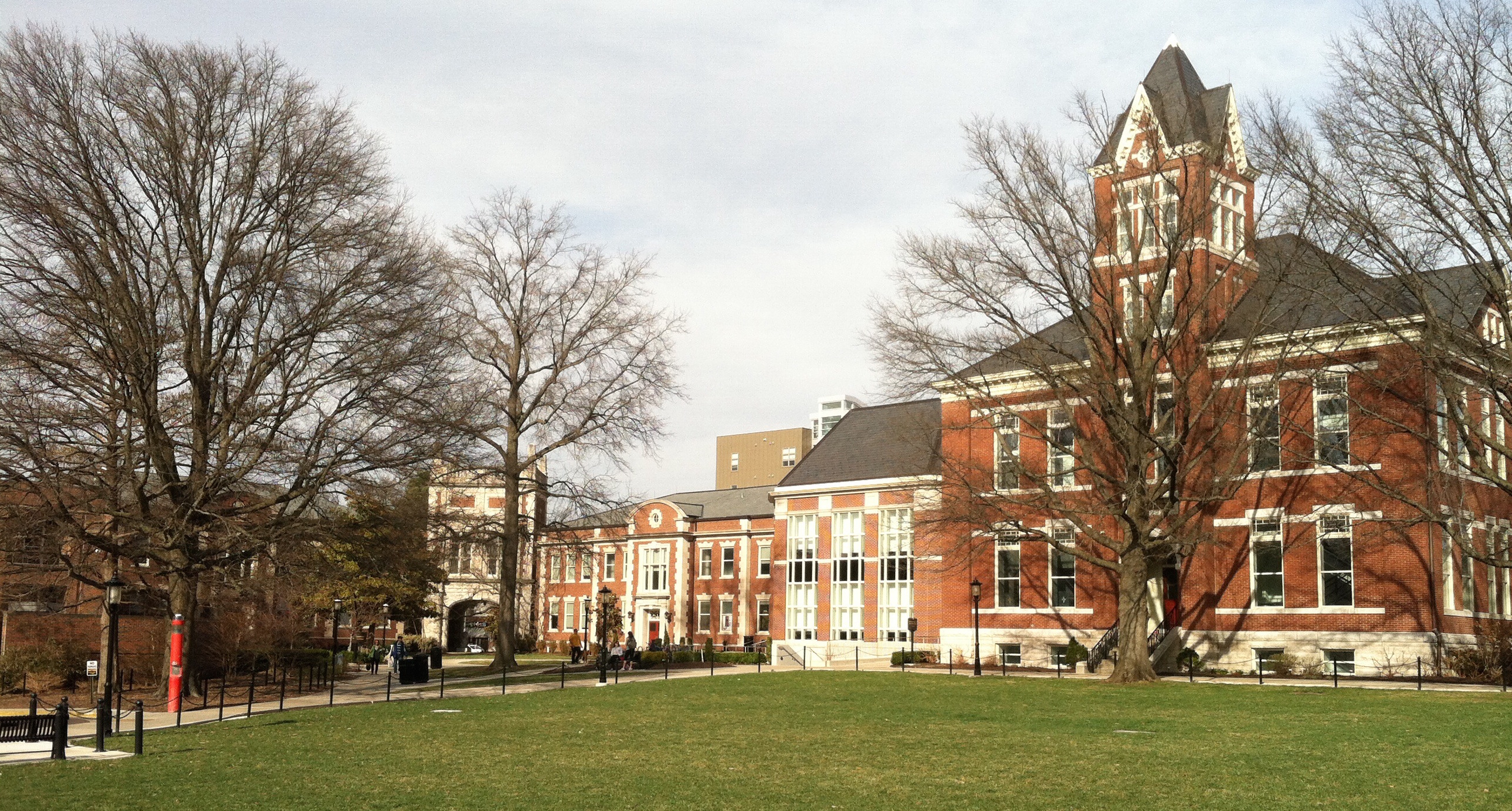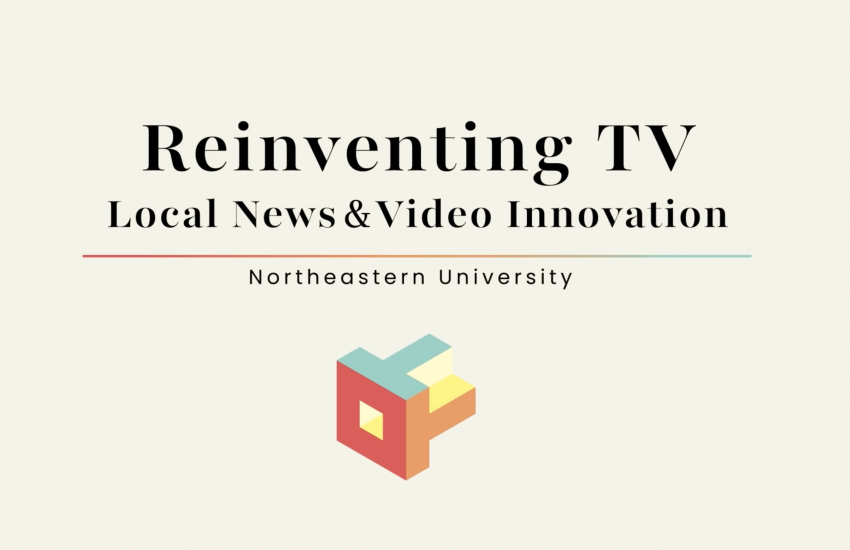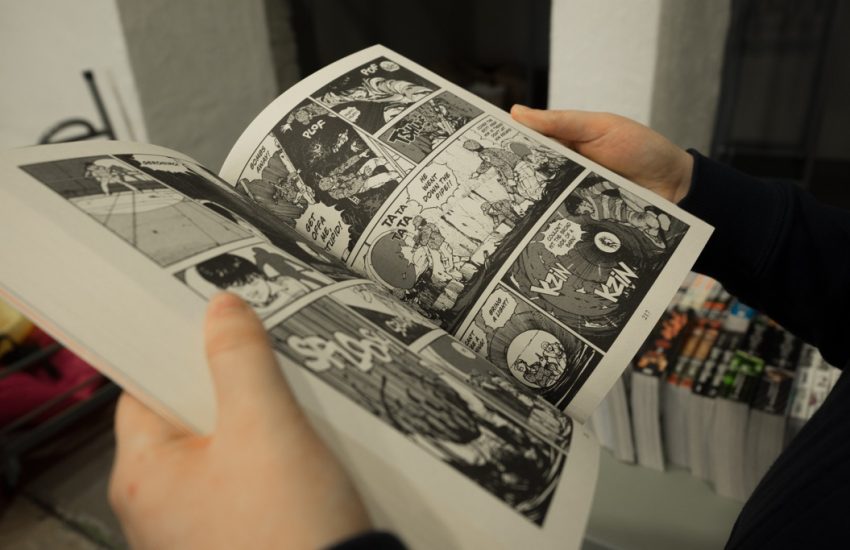14 innovative journalism courses to follow this Fall
With classes back in session, we wanted to highlight a few forward-looking courses being taught at journalism schools across the country. But first, to introduce these syllabi, we recommend “Those Who Do, Also Teach: David Carr’s Gift to Journalism Schools,” by Molly Wright Steenson for Storybench. It’s a look at Carr’s inspiring syllabus, Press Play, and why it resonates today more than ever. Below, an excerpt from Carr’s syllabus:
While writing, shooting, and editing are often solitary activities, great work emerges in the spaces between people. We will be working in groups with peer and teacher edits. There will be a number of smaller assignments, but the goal is that you will leave here with a single piece of work that reflects your capabilities as a maker of media. But remember, evaluations will be based not just on your efforts, but on your ability to bring excellence out of the people around you.
So take a look at the following J-school courses. Check out Robert Hernandez’s experiments in VR journalism, Molly Wright Steenson’s exploration of information architecture and the media landscape, Dan Nguyen’s data reporting class, Catherine D’Ignazio’s projects melding civic art and design, and our own Jeff Howe’s media innovation studio at Northeastern University, among many others. You don’t have to be a journalism student to dig deep into the readings, try out some assignments, and learn something new.

VR Journalism: Creating on Emerging Technologies
Syllabus here
Robert Hernandez, USC Annenberg
The class, in partnership with the media organizations and a variety of experts, will research and develop new journalism-related experiences for virtual reality, ranging from content creation to content consumption. Students will work together, navigating the different skills and culture, in a series of in- and out-of-class exercises that will focus on brainstorming, designing and developing VR experiences based on existing media brands/content, as well as creating from scratch. This class is a sandbox for journalism, technology and creativity. You are expected to put in work to produce creative prototypes that are aimed at a public launch.
Recommended readings
“Getting Real: The smarter, faster, easier way to build a successful web application,” 37signals
“Snow Crash,” Neal Stephenson
“Ready Player One: A Novel,” Ernest Cline
Community Engagement
Syllabus here
Jeff Jarvis and Carrie Brown, City University of New York (CUNY)
This is a course in listening to a community: understanding and empathizing with its needs and learning how to help a community share its own knowledge. We will talk to ambassadors from communities of various definitions — geographic (neighborhoods, towns), demographic (ethnic groups, age groups), interest (topics such as cancer, parenting, or sports), and business (organized around an industry or a job description.) These ambassadors will be journalists, community organizers, topic experts, and business proprietors who serve communities and who will, in turn, introduce the students to members of these communities so the students will develop skills in listening and discerning communities’ needs. We will also draw upon disciplines from outside of journalism such as cultural anthropology, public health, and community and political organizing to help us hone our listening skills. Through this course, students will begin to identify the communities they plan to serve in the practicum and start to interact with those communities where they gather online and in person.
Carrie recently blogged about her experience running this class.
Recommended readings
“Geeks Bearing Gifts,” Jeff Jarvis
“Assholes: A Theory,” Aaron James
“Engaging Communities: Content and Conversation,” Joy Mayer, Nieman Reports
“Journalism’s Theory of Change: From Community Engagement to Civic Action,” Josh Stearns
“From journalism to UX (and maybe back again),” Alex Schmidt
“The People Formerly Known as The Audience,” Jay Rosen
“Here Comes Everybody,” Clay Shirky
“#ISOJ Keynote: Can Social Media Help Us Create A More Informed Public?,” Andy Carvin
Audience and Engagement
Syllabus here
David Kellogg, Columbia University
We have four principal goals for you in this class. 1) Understand the value of Audience Engagement (A/E) in a news organization’s business model. 2) Understand the value of A/E for the journalist. 3) Master the variety of methods through which a journalist (and the news organization as a whole) can build engaged audiences. And 4) Write and Experiment! We want your effort going into producing quality content that experiments with a variety of A/E best practices. Seven weeks is usually not enough time to build a huge amount of traffic that lets you see the results of testing, but we want you to experiment with different approaches. Publishing to a live site will at the very least generate feedback on your efforts from your classmates (and professors).
Information Landscapes and Data Cultures
Syllabus here
Molly Wright Steenson, Carnegie Mellon University
What does information have to do with landscape, and what does media have to do with architecture? These days, everything. Information bleeds into the environment around us, multiplied by screens of every shape and size, replicated and reverberated by our personal social networks and amplified by digital connections. Where in the digital world, we tend not to blink when we hear the words “information architecture,” what exactly does it mean when technologies of information shape our physical environments? This class is about forging and exploring the connections between the digital and the physical worlds. This seminar looks critically at the dynamics that shape spaces of information and cultures of data. We will examine media through an architectural lens and at information spaces through a critical media lens.
Recommended readings
“The Algorithms of Our Lives” Lev Manovich
“The Medium is the Message” Marshall McLuhan
“Breaking Things on Purpose: Glitch art’s pixel-mixing algorithms” Doug Bierend
“How Algorithms Shape Our World” TEDGlobal 2011, Kevin Slavin
“The Restlessness of Objects” Jesse Lecavalier
“The White Room: Eliot Noyes and the Logic of the Information Age Interior” Grey Room No. 12. John Harwood
“Dataveillance and Countervailance,” “Raw Data” is an Oxymoron. Rita Raley
Web Coding for Interactive Design
Syllabus here
Aurelia Moser, Journalism + Design, The New School
Interactives and news apps are changing the way we process media, and the expectations for media producers in newsrooms globally. Data journalism departments and newsrooms like Vox, the NYTimes, ProPublica, and 538 build narrative and newsworthy tools around code; and the participatory nature of their media output invokes new languages and web fluencies. This course will introduce web development for newsroom interactives, including an introduction to web scripting languages, version control for collaborative coding, and the authorship of interactive narrative on the web. The goal of the course is to compliment student’s existing coursework and interests with some essential coding skills, by course completion, helping them design, build, and deploy a data-driven, or news-inspired interactive. Students will workshop a news interactive of their own design throughout the course, punctuated by smaller exercises and lecture pairings on the topics of HTML5/CSS3, Javascript and contemporary development in data journalism.
Recommended readings
“Writing and telling stories,” Darnton, R.
“How they did it,” Journalism Tools
“The hypocrisy of the Internet journalist,” Norton, Q.
“When to quit your journalism job,” Rosen, J.
“Last call: the end of the printed newspaper,” Shirky, C.
“Storytelling and Success Stories,” Kirk, A.
“Publishers or platforms? Media giants may be forced to choose,” Kiss, J. and Arthur, C.
Fundamentals of Digital Journalism
Syllabus here
Dan Kennedy, Northeastern University
In 2014 “digital journalism” is little more than another way of saying “journalism.” Newspapers increasingly are mere adjuncts to their websites. Television and radio stations have repurposed much of their content for the Web. Moreover, media that appear to be quite different in the analog world — that is, newspapers, magazines, television and radio — are very much alike in the digital world, as news organizations of all kinds increasingly combine text, photographs, video and audio. It’s all zeroes and ones. In this course we will explore how Internet-based technologies are changing journalism and redefining how journalists do their jobs. We will learn how to use tools such as blogging, digital photography, mapping, video and social networking not only to communicate more effectively with our audience, but to communicate with and learn from our audience as well.
Recommended readings
“Reporter’s Guide to Multimedia Proficiency,” Mindy McAdams
Nieman Journalism Lab
A major metropolitan daily newspaper
Media LIT: Overcoming Information Overload
Syllabus here
Dan Gillmor, Arizona State University
Media literacy helps us understand, analyze and create media. While we rely on good journalism to provide accurate information, we also have responsibilities of our own in this media-saturated environment. We can no longer be passive consumers of media. We need to be active users of media, as readers, listeners, viewers and creators, so we are all better informed. Our goal is to help you do just that.
Recommended readings
“Mediactive” Dan Gillmor
“A crash course in verification and misinformation in the wake of the Boston bombing” Josh Stearns
“Like it or not, native advertising is squarely inside the big news tent” Josh Benton
“A New Age for Truth” Craig Silverman
“Eli Pariser on the future of the Internet” Lynn Parramore
“What happens to #ferguson after Ferguson?” Zeynep Tufekci
“How Connie Schultz built a unique community on Facebook” Anna Clark
Civic Art & Design Studio
Syllabus here
Catherine D’Ignazio, Emerson College
Civic Art and Design are practices that leverage culture to generate social change, to serve the public good and/or to imagine alternate collective futures. In this class we address the shifting role of the artist, designer and storyteller in a world beset by crises, inequities and global concerns. This course covers theories of Civic Art and Design as well as methods for including communities and audiences at various stages in the creation of a project. We conduct experiments in performance art, storytelling, data visualization, community art, interactive documentary and networked art in order to interrogate where, when, how and why a Civic Artist takes action in the world. Throughout the class, we will model a design research process that culminates in the completion of a public art installation about the future of transportation in the City of Boston.
Recommended readings
“The Work of Art in the World: Civic Agency and Public Humanities,” Doris Sommer
“Superpowers to the people! How young activists are tapping the civic imagination,” Jenkins et al.
“My architectural philosophy? Bring the community into the process,” Alejandro Aravena
Public Affairs Data Journalism
Syllabus here
Dan Nguyen, Stanford University
Our primary goal is to learn how to argue with and against data. To understand the business of our government, including the power it wields over – or yields to – our institutions, then we must understand data, the byproduct of that business, and often, its fuel. We see data as a means of understanding and, when necessary, critiquing the “data-driven decisions” in public affairs. Our focus is on concepts rather than technology and mathematical problem solving over statistical methods. The core of our work is ultimately the same core of traditional reporting: the initiative to question, the independent research of facts, and the desire to inform the public.
Recommended readings
“Unseen Toll: Wages of Millions Seized to Pay Past Debts” ProPublica
“Finding and telling data-driven stories in billions of tweets” Alex Howard, O’Reilly
“As the seas rise, a slow-motion disaster gnaws at America’s shores” Reuters
“Why timely, reliable data on mass killings is hard to find” Pew Research
“The New Precision Journalism” Philip Meyer
“Now You See It: Simple Visualization Techniques for Quantitative Analysis” Stephen Few
Seminar in Investigative Reporting
Syllabus here
Mike Beaudet, Northeastern University
Investigative journalists are often the “go to” people in their newsrooms because they know where to look for information, how to gather and analyze data, and what questions to ask. But all reporters should have an investigative mindset that allows them to add compelling content to what seems like a routine story. You will leave this course knowing how to peel back the layers of a story to find the nugget of truth. It can be painstaking and frustrating when you spend countless hours reporting, only to reach a dead end. However, the success stories make the journalistic hunt worthwhile and rewarding. You will work collaboratively in teams to produce multimedia investigations that will be published and/or aired on television. Last semester we partnered with WFXT-TV to produce investigative reports. In previous semesters, investigations were published in The Boston Globe under the direction of Pulitzer Prize-winning professor Walter Robinson.
Recommended readings
“The Investigative Reporter’s Handbook,” Brant Houston.
Data reporting
Syllabus here
Derek Willis, Georgetown University
The world that we live in and report on is increasingly influenced by data. This course will help you use data to find and develop stories that can’t be found in other ways. Data can be anything: spreadsheets full of numbers, the text of speeches or the measured observations of daily life. Reporters need to be able to treat data as another source to be researched, interviewed and analyzed, using the right tool for the job. Beginning with spreadsheets and continuing to databases, basic mapping and rudimentary programming, this class will make working with data a part of your skill set. This is a skills-based course, so students will need to be comfortable with learning to use computer software beyond word processors. If you are wondering if you can do this stuff, you can. You may prefer interviewing people to data, but avoiding data – particularly for Washington journalists – is no longer an option.
Recommended readings
“Story hunting in birth, death data” Anthony DeBarros
“Political Funds Remain an Asset for Many Ex-Lawmakers” Eric Lipton
“A Gentle Introduction to SQL Using SQLite” Troy Thibodeaux
Digital Storytelling Basics
Syllabus here
Gina Chen, UT-Austin
The digital revolution is having a profound impact on the way news stories are being researched, reported, edited and distributed. Today’s journalist much be prepared to master a variety of digitally based storytelling methods that go beyond the written word. This course will focus on the challenges of writing and reporting for the web, while providing training in multiple technologies for digital delivery of text, photos, audio and video news across journalism platforms.
Recommended readings
“The Digital Reporter,” Dawson, K.W.
Media Innovation Studio
Syllabus here
Jeff Howe, Northeastern University
“Things may come to those who wait, but only the things left by those who hustle.” — Abraham Lincoln
There are two ways to read this quote. The first holds that this country’s 16th president was extolling the virtues of hard work. Coming from a man who taught himself to read after 16 hours behind a plow, that is surely true. But I like to believe Lincoln also meant that the ripest plums go to the hustlers—the savvy operators who know the game is rigged. The truth is that Lincoln’s quote could be referring to journalism, but only if we’re willing to accept both interpretations. Success in journalism requires intelligence, the ability to sculpt meaning from language, and simple, patient toil. But it also requires wit and speed and the ability to improvise…
Recommended readings
“Annals of the Former World,” John McPhee
“State of the News Media,” Pew Research
“The End of Big,” Nicco Mele
“What is Code,” Paul Ford
“The Storytelling Animal: How Stories Make Us Human,” Jonathan Gottschall
The Art of Narrative Non-fiction
Outline here
James Ross, Northeastern University
We will read and discuss the work of some of the most compelling non-fiction writers of the 20th and 21st century and screen some of the films based on their works. We will watch and discuss a film one week and discuss the author and the book on which the film was based the following week. Our goal for the semester is to examine how narrative works, in both film and print, and explore the different forms of non-fiction. The authors we’ll be discussing narrate “true” stories but use devices normally associated with fiction, such as scenic construction, dialogue and shifting points of view.
Recommended readings/viewings
Reading
“Hiroshima,” John Hersey
“In Cold Blood,” Truman Capote
“Fear and Loathing in Las Vegas,” Hunter S. Thompson
“Dispatches,” Michael Herr
“The Mayor of Castro Street,” Randy Shilts
“Behind the Beautiful Forevers,” Katherine Boo
Films
Black Rain
Capote
Fear and Loathing in Las Vegas
Full Metal Jacket
Milk
Salaam Bombay
Sherlock Holmes and the Internet of Things
Syllabus here
Lance Weiler and others, Columbia University
Sherlock Holmes & the Internet of Things is an ongoing prototype developed and run by the Columbia University Digital Storytelling Lab that explores new forms and functions of story. Designed to be an open R&D space that experiments with shifts in authorship and ownership of stories, the massive collaboration also uses a detective narrative to examine the policy and ethical issues surrounding the Internet of Things. The goal of Sherlock Holmes & the Internet of Things is to build a massive connected crime scene consisting of smart storytelling objects. This fall teams will create, design, build and test prototypes that will be plugged into a number of crime scene locations around the world.
Recommended readings
“Little Bets: How Breakthrough Ideas Emerge from Small Discoveries,” Peter Sims
“Information Doesn’t Want to Be Free,” Cory Doctorow
“The Ten Faces of Innovation: IDEO’s Strategies for Defeating the Devil’s Advocate and Driving Creativity Throughout Your Organization,” Tom Kelly
“Transmedia Marketing: From Film and TV to Games and Digital Media,” Anne Zeiser
“Creativity, Inc.: Overcoming the Unseen Forces That Stand in the Way of True Inspiration,” Ed Catmull & Amy Wallace





